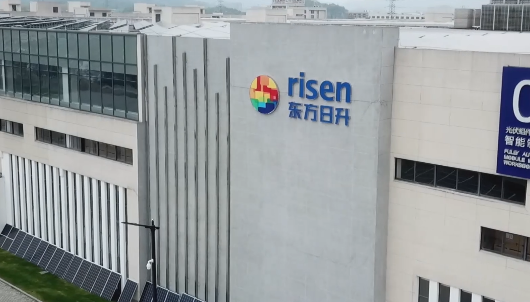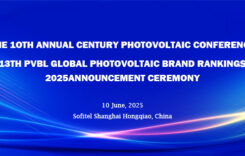PVTIME – Risen Energy, a leading solar module manufacturer in China, was among the voices that shared its visions and views on the key innovation shaping the future of renewables at China’s Solar Industry Annual Conference 2022, one of the largest industry events that gather the leading experts, industry leaders, and scholars to discuss and offer outlooks on the opportunities and challenges facing the solar supply chain, low-carbon strategies, and technology applications.

In a keynote speech, Song Yifeng, Product Director of Risen Energy, emphasized the role of its Hyper-ion, the heterojunction (HJT) solar modules in leading the way of decarbonization, as part of the introduction of the company’s new product strategy that will see Risen Energy leaning into HJT technology to develop a new generation of products characterized by low-carbon, low-cost and high-efficient.
“Photovoltaic product is one of the greatest solutions to reduce carbon emission and energy consumption. Against the backdrop of the global drive to decarbonize the economy, solar energy meets the world’s demands for driving forward sustainable, low-carbon development. Our product strategy is based on 210mm large-size and n-type HJT technology to create high-power, high-efficiency solar modules that reduce the cost of electricity. In addition, our products will be equipped with thinner silicon wafers and high-strength alloy steel frames, meaning that they are more climate-friendly and have less carbon footprint,” said Song Yifeng.
Risen Energy’s HJT solar module Hyper-ion is the flagship product under the banner of its new strategy. The high-efficiency and high-power module boosts unrivaled performance reliability while featuring lower attenuation and temperature coefficient. A low-carbon solar product designed to bring down the cost of electricity, Hyper-ion adopts high efficiency 210mm HJT cell stacking and packing technology, with the module power reaching up to 700Wp+.
The outstanding performance of Risen Energy’s n-type cell results in higher power generation gain. It features the industry-leading 100μm ultra-thin cell technology and is manufactured through a module packaging process, coupled with a more environmentally friendly high-strength alloy steel frame to bring its carbon footprint value (CFP) lower than 400kg eq CO2/kWc, which is far lower than the market average.
A third-party test that verifies the performance of Risen Energy’s HJT solar module Hyper-ion shows that its power generation gain is 6.14%, beating the PERC bifacial modules in a project in Yinchuan, China. Compared with the PERC monocrystalline solar module, its power generation gain reaches 9.63%. A 100MW solar plant using the HJT module Hyper-ion generates 6 million kWh more electricity and releases 5,760 tons of less carbon dioxide than the one using PERC modules. Compared with the TOPCon module, it can also generate 3 million kWh more electricity a year, which is equivalent to reducing 2,880 tons of CO2.











